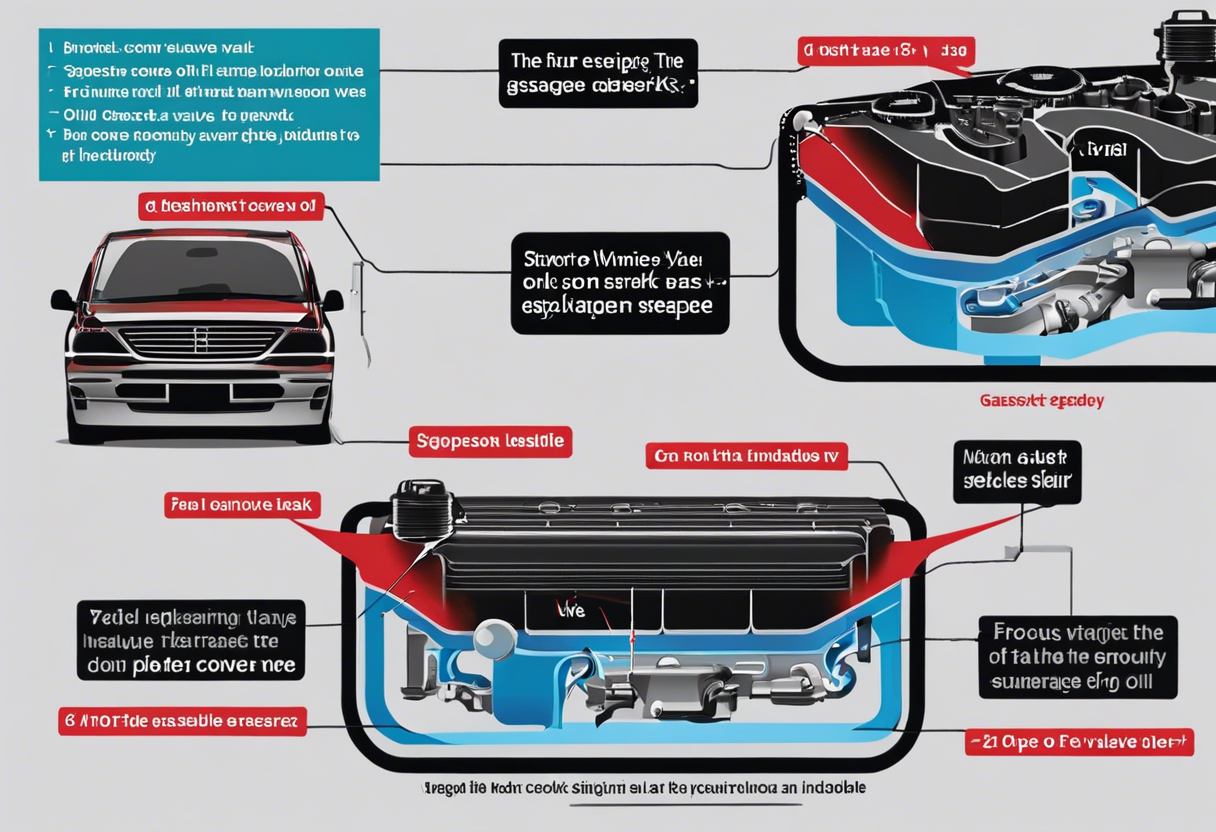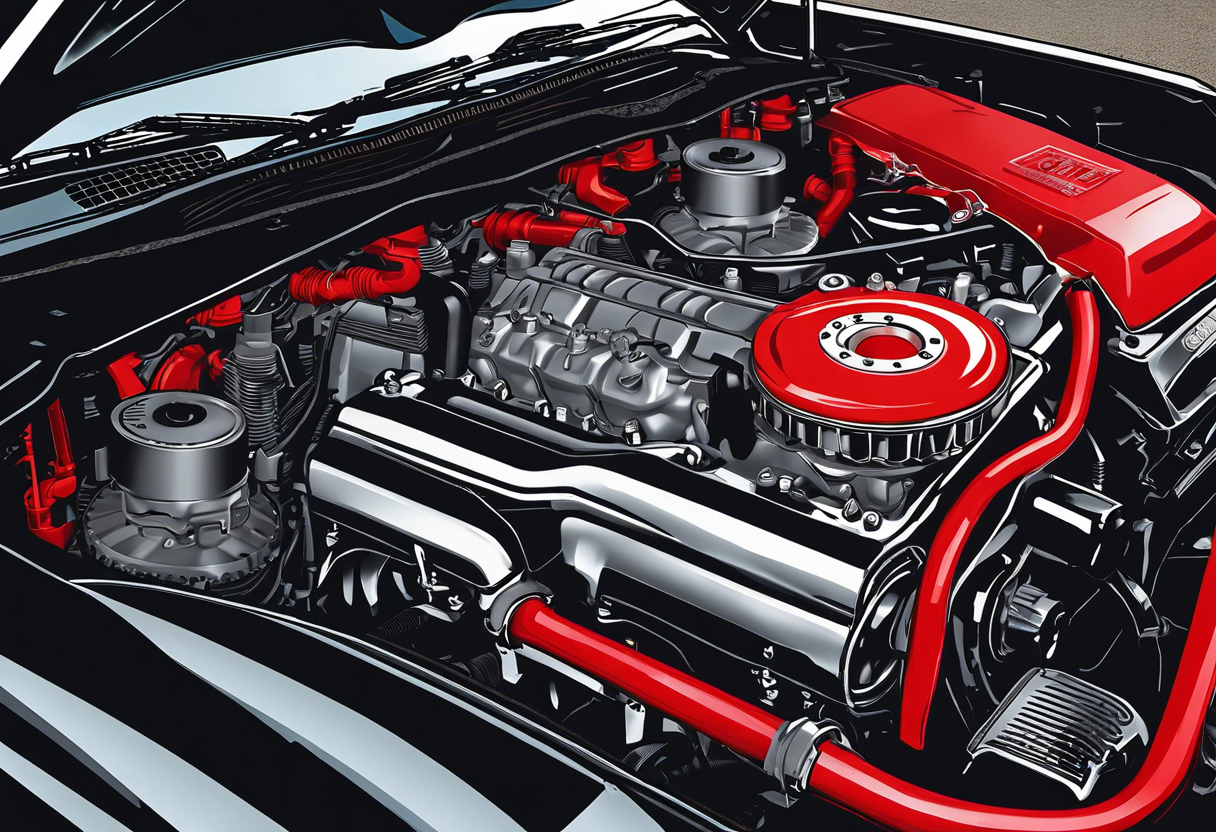The valve cover gasket plays a pivotal role in maintaining the health of a vehicle’s engine. Situated between the valve cover and the engine cylinder head, this gasket serves as a seal, preventing oil leaks and barring contaminants from entering the engine. It withstands high temperatures and corrosive substances, making it crucial for the engine’s longevity and efficiency. Over time, the gasket may deteriorate due to exposure to heat and engine vibration, emphasizing the importance of recognizing warning signs of leakage to ensure timely maintenance and avoid engine damage.
Recognizing the Symptoms:
Early Indicators of Trouble
When a cover gasket begins to fail, attentive vehicle owners can spot early warning signs:
- Oil Leaks: Look for oily residue near the valve cover or engine bay.
- Low Oil Levels: Consistently low oil levels may suggest a slow leak.
- Engine Misfires: A faulty gasket can lead to oil seeping into spark plug wells, causing misfires.
- Unusual Smells: Burning oil aroma is a clear indicator of oil dripping onto hot engine parts.
- Visible Smoke: Smoke emanating from the engine area can be a sign of oil burning off, often related to a leak.
Identifying these symptoms promptly can prevent more significant engine damage.
Oil Leaks:
The Most Visible Sign of Gasket Failure
Oil leaks are often the most apparent indicator that a valve cover gasket is failing. A defective gasket can no longer maintain a seal between the valve and the engine, leading to oil escaping from the top of the engine. This results in:
- Oil accumulation around the valve cover
- Possible drips on the ground where the car is parked
- A noticeable burning oil smell as the leaking oil may come into contact with hot engine parts
- Smoke emanating from the engine area when the leaking oil burns off
Detecting oil leaks early can prevent more extensive damage and costly repairs. Regular inspections are recommended to identify this highly visible sign of gasket failure.
Corrosion and Damage:
Inspecting for Hidden Issues
When inspecting a vehicle for potential gasket leaks, one must pay close attention to any signs of corrosion or damage that may not be immediately apparent.
- Check around the valve cover for any signs of rust or corrosion, which can indicate a longstanding leak.
- Inspect the gasket surface for cracks or warping, as these can compromise the seal.
- Look for oil contamination on other engine parts, which can accelerate wear and cause further issues.
- Use a flashlight and inspection mirror to examine hard-to-see areas where minor leaks might be present but not obvious.
- Consider the engine’s age and history; older engines or those with a record of overheating may be more prone to hidden damage related to leaking gaskets.
Performance Problems:
Misfires and Engine Irregularities
Leaking cover gaskets often manifest as performance issues in an engine, primarily misfires and irregular operation. When the gasket fails, it can allow oil to seep into the spark plug wells, leading to several adverse effects:
- The oil may contaminate the spark plugs, causing a weak spark or complete failure to ignite the fuel-air mixture.
- Misfires occur when combustion does not happen correctly or at the right time, leading to rough idling, hesitation, and stalling.
- Engine power and fuel efficiency can significantly decrease as a result of the irregular combustion.
- Unaddressed, these issues can compound, possibly resulting in more severe engine damage and costly repairs.
Unusual Noises:
Ticking and Tapping under the Hood
When a valve gasket fails, one might notice abnormal sounds emanating from the engine bay. These sounds can manifest as:
- Ticking: A rhythmic ticking noise that becomes more pronounced with engine speed can indicate oil leaking from the gasket onto the hot engine parts and exhaust manifold.
- Tapping: A tapping or knocking sound may suggest that the oil is not reaching the top of the engine effectively, leading to insufficient lubrication of the valve train.
It’s vital to have any unusual noises checked by a professional mechanic, as they could be symptomatic of a leaking gasket or potentially more serious engine issues.
Smelling Trouble:
The Odor of Burning Oil
When oil seeps from a faulty gasket, it may contact the hot engine or exhaust manifold. This often results in the unmistakable scent of burning oil, a pungent and acrid smell that signals a potential leak. Vehicle owners should be aware that this odor:
- Typically surfaces when the engine has warmed up, as the heat exacerbates the burning of leaked oil.
- Can permeate the cabin, alerting the driver due to the close proximity of the engine compartment to the vehicle’s ventilation system.
- May be accompanied by smoke, especially if significant amounts of oil spill onto hot engine parts.
- Serves as an early warning, enabling the driver to address the issue before it leads to more severe engine damage.
Preventive Measures and Regular Maintenance Checks
Vehicle reliability depends heavily on regular maintenance, which is essential for identifying early signs of wear and potential failures, such as those associated with cover gaskets. To preclude such issues, adhere to the following guidelines:
- Regular Inspections: Schedule frequent engine inspections to check for any signs of oil leaks or degradation of the valve gasket.
- Oil Changes: Perform timely oil changes as recommended by the vehicle’s manufacturer, using the correct oil type to ensure proper engine lubrication.
- Gasket Monitoring: Inspect the condition of the valve gasket during routine maintenance or when accessing engine components.
- Torque Specifications: Ensure that the valve cover bolts are tightened to the manufacturer’s specified torque, as over-tightening can damage the gasket.
- Professional Assessment: Have a certified mechanic evaluate any suspicious signs to prevent minor issues from escalating into significant damage.
Diagnosing the Issue:
A Step-by-Step Guide
- Visual Inspection: Check for oil leaks and residue around the valve cover area. Accumulated dirt and oil outside the cover could indicate a compromised gasket.
- Check Oil Level: A dropping oil level can signal a leak. Use the dipstick to measure and monitor oil levels over time.
- Engine Smoke: Look for smoke emanating from the engine bay, which could be due to oil leaking onto hot engine parts.
- Sniff Test: Smell for a burn odor, often a sign of oil dripping on hot components.
- Consult a Professional: If the previous steps suggest a leaking gasket, further diagnosis by a skilled mechanic is advised.
Repair or Replace:
Making the Right Decision for Your Vehicle
When confronted with a leaking valve cover gasket, vehicle owners must evaluate whether to repair or replace it. Consider the following:
- Severity of the Leak: Minor seepage might only necessitate a new gasket, while significant leaks could indicate the need for more extensive repairs.
- Age and Value of the Vehicle: If the vehicle is older and of lower value, a cost-effective repair may be justified. Conversely, newer or high-value vehicles warrant proper replacement to maintain their integrity.
- Frequency of Issues: Occasional leaks can be repaired, but if the problem is recurring, replacing the problematic parts may offer a long-term solution.
- Cost Comparison: Assess the cost of repeated repairs against a one-time replacement, factoring in potential future issues.
A mechanic’s assessment can also guide the decision between repairing the gasket alone or replacing more significantly affected components.
Cost Considerations:
Estimating the Expense of Gasket Replacement
When considering the replacement of a valve cover gasket, vehicle owners must account for various cost factors:
- Part Costs: The gasket itself is relatively inexpensive, typically ranging from $20 to $80.
- Labor Charges: Depending on the engine layout, labor costs can vary significantly, from $100 to over $400.
- Vehicle Make and Model: Luxury or specialized vehicles may have higher parts and labor rates.
- Additional Repairs: Ancillary damage or wear discovered during gasket replacement can add to the overall expense.
- Geographic Location: Labor rates can fluctuate based on regional average costs.
Conclusion:
The Long-term Impact of a Leaking Valve Cover Gasket
The persistent leaking of a valve cover gasket can have serious long-term consequences for a vehicle’s engine. If left unaddressed, what begins as a minor issue can escalate into major complications, such as:
- The degradation of engine parts due to oil contamination, leading to premature wear and potential engine failure.
- Possible fire hazards as oil leaks onto hot engine components, posing a risk to vehicle safety.
- Compromised engine performance and efficiency, with potential for reduced fuel economy and increased emissions.
In conclusion, regular maintenance and timely intervention are crucial in preventing the extensive damage that a leaking valve cover gasket could eventually cause.
FAQS About Valve Cover
for more info: https://manualwheel.com/5-telltale-sympt…-master-cylinder/
for more info: https://www.youtube.com/watch?v=9AsC0GO8cIo

